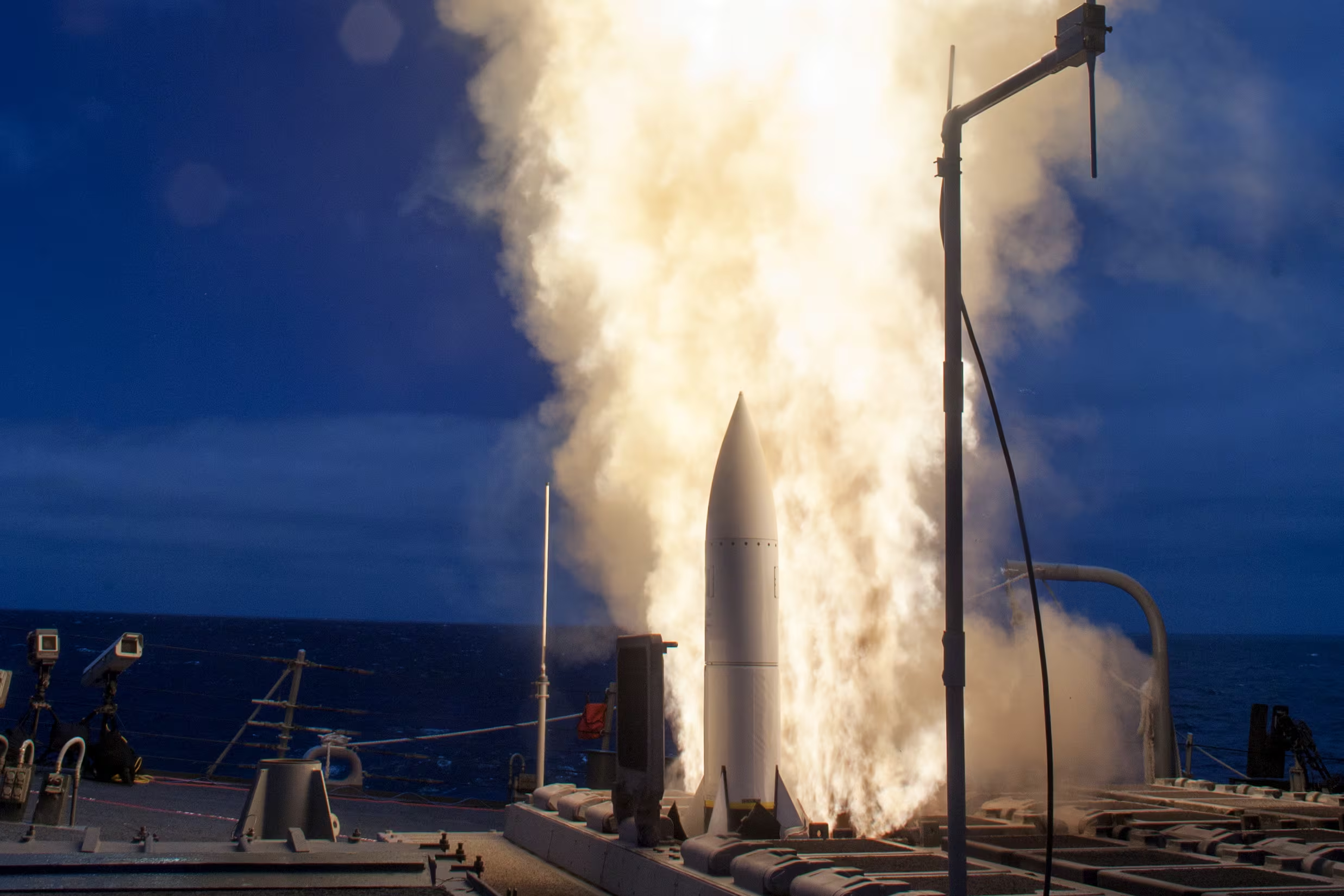HUNTSVILLE, Ala. — The U.S. Missile Defense Agency is planning a first flight test of some elements that will make up the air and missile defense architecture of Guam in December 2024, the agency’s acting director said Aug. 9 at the Space and Missile Defense Symposium.
The test will involve the Navy’s Aegis weapon system deployed to Guam and the SM-3 Block IIA interceptor, Rear Adm. Doug Williams said. He is serving as the acting director while the nominated director, Maj. Gen. Heath Collins, awaits Senate confirmation. Williams is the agency’s director of testing.
The first wave of defenses designed to counter complex missile threats against Guam will include radars, launchers, interceptors, and a command-and-control system to be placed on the island next year, according to previous agency lead Vice Adm. Jon Hill.
The Missile Defense Agency asked for more than $800 million in its fiscal 2024 budget request to develop and begin constructing its architecture to defend Guam against a range of threats including ballistic, cruise and hypersonic missiles. Nearly have of that money will continue the design and development of the architecture.
Another $38.5 million would upgrade the agency’s Command and Control, Battle Management, and Communications program to support Guam’s defense.
The agency is investing in the architecture and partnered with the Army and Navy. The sea service will provide technology and capability from its Aegis weapon system and has jurisdiction over the land where the assets will be placed.
The Army was designated as the acquisition lead for the defense of Guam in June. The service requested an additional $638 million in FY24 to supply its share of equipment to Guam, including three Lower Tier Air and Missile Defense Sensors and Patriot missile defense systems, as well as an assortment of Mid-Range Capability missile launchers and Indirect Fires Protection Capability launchers, along with the Northrop Grumman-built Integrated Battle Command System designed to connect the right sensors to the right shooters on the battlefield.
While the Missile Defense Agency waits for the Army’s capabilities, it is adapting the Aegis system to work on the challenging terrain of Guam, Hill said earlier this year. The system will differ from what is found on an Aegis ship and from the configuration of Aegis Ashore sites in Romania and Poland, he explained.
The agency is also developing a command suite using Command, Control, Battle Management, and Communications system technology that integrates the Integrated Battle Command System and Aegis command and control for ballistic and hypersonic missile threat detection and tracking.
The architecture will also include the installation of four high-end, solid-state, mobile AN/TPY-6 radars — which are new sensors that use technology from the Long Range Discrimination Radar in Clear Space Force Base, Alaska — along the periphery of Guam.
Meanwhile, the agency is preparing for a test of the Long Range Discrimination Radar scheduled for Aug. 16, according to Williams. “We’re going to be exercising the launch of an [intercontinental ballistic missile] target” to test the radar.
In December, the agency will test the Ground-based Midcourse Defense system that exercises a new interceptor capability — a two-stage selectable feature — that will “increase the battle space” of the interceptor, Williams noted.
Also coming up are tests of the SM-3 Block IIA, the Terminal High Altitude Area Defense system and the Patriot’s Missile Segment Enhancement interceptors, Williams said.
Jen Judson is an award-winning journalist covering land warfare for Defense News. She has also worked for Politico and Inside Defense. She holds a Master of Science degree in journalism from Boston University and a Bachelor of Arts degree from Kenyon College.






